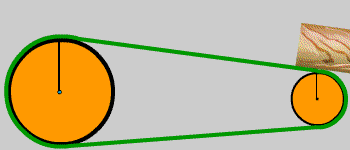There are many transmission modes. Among the four major types of transmission methods (mechanical, electrical, hydraulic and pneumatic) that are currently widely used, none of the power transmissions is perfect. Today I will share with you the comparison of the pros and cons of the 4 transmission modes.
Mechanical transmission
1. Gear transmission
Gear transmission is the most widely used transmission form in mechanical transmission. It has relatively accurate transmission, high efficiency, compact structure, reliable work and long life. Gear transmission can be divided into many different types according to different standards.
advantage:
Compact structure, suitable for short-distance transmission; suitable for a wide range of circumferential speed and power; accurate, stable, and high-efficiency transmission ratio; high reliability and long life; it can realize parallel axis, arbitrary angle intersecting axis and arbitrary angle intersecting axis Between the transmission.
Disadvantages:
Requires high manufacturing and installation accuracy, high cost; not suitable for long-distance transmission between two shafts; no overload protection.
2. Turbine worm drive
It is suitable for movement and dynamics between two axes that are vertical and not intersecting in space.
Advantages: large transmission ratio; compact structure size.
Disadvantages: large axial force, easy to generate heat, low efficiency, only one-way transmission.
The main parameters of the worm gear drive are: modulus; pressure angle; worm gear index circle; worm index circle; lead; number of worm gear teeth; number of worm heads; transmission ratio, etc.
3. Belt drive
Belt transmission is a mechanical transmission that uses a flexible belt tensioned on a pulley to perform movement or power transmission. The belt drive usually consists of a driving wheel, a driven wheel and an endless belt tensioned on two wheels.
1) It is used when the two axes are parallel to the same rotation direction, which is called the concept of opening motion, center distance and wrap angle.
2) The belt type can be divided into three categories: flat belt, V belt and special belt according to the cross-sectional shape.
3) The focus of application is: calculation of transmission ratio; stress analysis and calculation of belt; allowable power of a single V-belt.
4) Main features of belt drive:
advantage:
It is suitable for transmission with a large center distance between two axles. The belt has good flexibility, can alleviate impact and absorb vibration; it will slip when overloaded to prevent damage to other parts; it has a simple structure and low cost.
Disadvantages:
The outer size of the transmission is large; a tensioning device is required; a fixed transmission ratio cannot be guaranteed due to slippage; the belt life is short; the transmission efficiency is low.
4. Chain drive
Chain transmission is a transmission method in which the movement and power of a driving sprocket with a special tooth profile is transmitted to a driven sprocket with a special tooth profile through a chain. Including driving chain, driven chain, circular chain.

